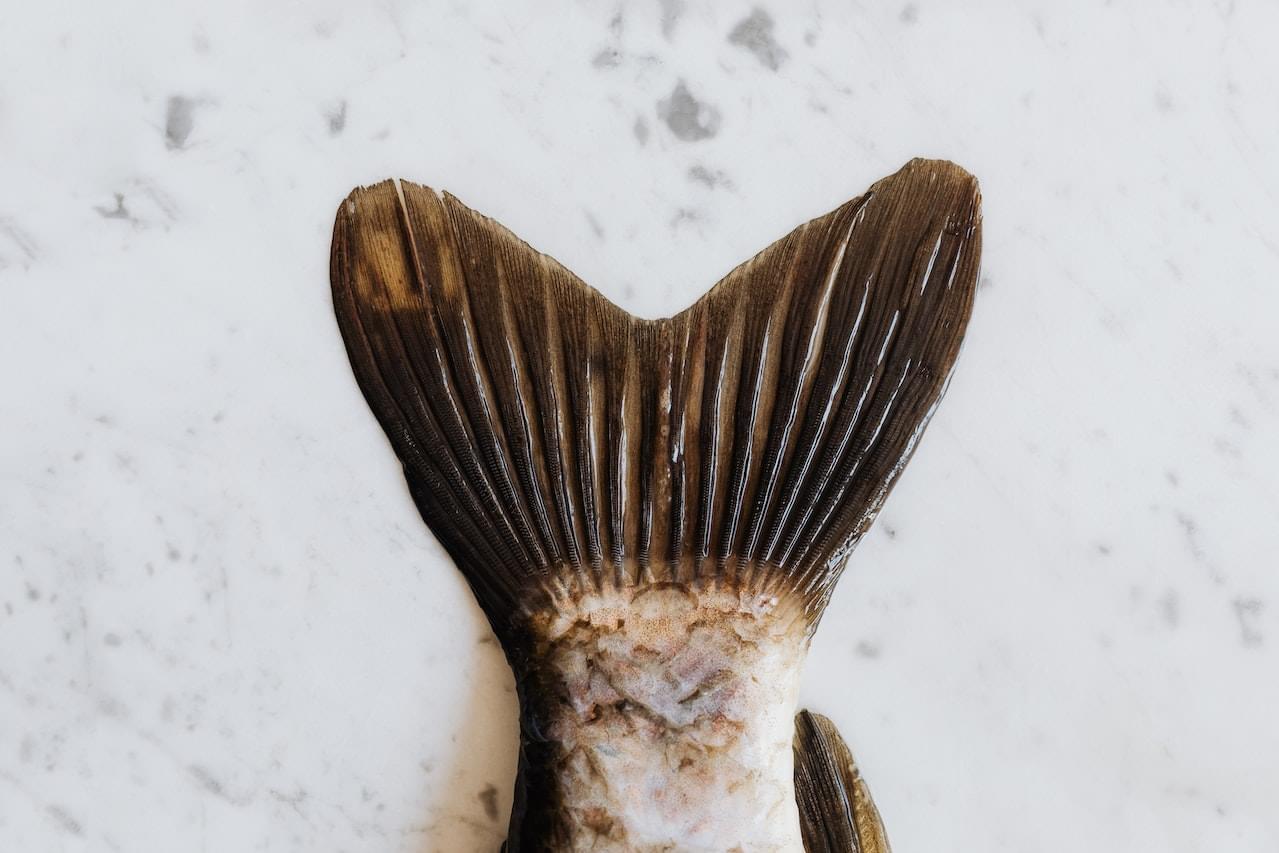Carp will be added to the Christmas menu this year
Fish prices have risen, but the increase in consumer prices is not greater than that of other foodstuffs. The cheapest way to get fresh fish is directly from the producers, nevertheless, the prices may significantly vary at retailers, depending on location, the nature and degree of processing, and the type of packaging or preservation.

The price of carp (too) has increased
The Institute of Agricultural Economics (AKI) collects information on the prices of fish from several sources. It collects monthly producer prices (without transport costs and VAT) of the most popular fish species among consumers produced in Hungary nationwide from twenty relevant market players who sell fish on their farms. To be representative, major traders covering most part of the country are also included among the data providers. The monthly data are aggregated, averaged per quarter and rounded to whole numbers. The Institute also observes the consumer prices of the most popular fish products on a monthly basis, and two more times before Easter and Christmas, at 2 markets in Budapest and at 12 rural markets, as well as at 2 large chain retailers in the vicinity of the capital. In addition, AKI is collecting the prices of fresh fish products currently from three web shops on a weekly basis since 2021 with an online application. All the data are available on AKI’s “Fish Prices Data Query Interface” displayed on visualization charts in the framework of a Power BI platform, and can also be downloaded in data tables.
According to the data of AKI, nearing the end of the year, in October-November 2022, producer (i.e. farm gate) prices did not increase significantly compared to the prices of the preceding third quarter, but compared to last year’s similar period, a significant increase can be observed in all fish species’ price. The price increase was primarily caused by increased feed prices, transport costs and electricity charges, but the declining production volumes were also responsible, as the fishing industry was severely affected by drought.
The average farm gate price of carp is around HUF 1,400/kg in the last quarter of 2022, which is similar to the price of the previous quarter, but it is 47 percent (HUF 450/kg) higher compared to the same period last year. The price of grass carp did not change compared to the previous quarter and was around HUF 1,200/kg, but compared to the same period last year, it rose by 33 percent (HUF 300/kg). The price of bighead and silver carps decreased slightly compared to the period of July to September 2022, to HUF 650/kg, but it increased by 63 percent compared to the same period last year. Wels is sold at a price of around HUF 2,600/kg, which is HUF 200 cheaper per kilogram compared to the previous quarter, mainly because it has an abundant supply this time of the year. Compared to the same period last year, the average price of wels rose by 18 percent. Prussian carp is available at HUF 650/kg, which is HUF 50 more expensive than last year’s price.
During the pre-Christmas period, the consumers can buy mostly the above-mentioned fish species from the producers at fish sales points set up on farms. The prices available to consumers are usually higher than farm gate prices, given that serving in small batches results in higher logistics costs, and the consumer price also includes 5 percent VAT. At the farms, consumers can currently buy freshly caught live carp for between HUF 1,700/kg and HUF 2,000/kg, grass carp between HUF 1,500 and 1,600/kg, pike perch for HUF 1,000/kg, wels for HUF 3,500/kg and Prussian carp for HUF 650/kg. Typically, direct sales to consumers are mainly done in smaller settlements, where there is often no shopping centre or fish store nearby.
In November 2022, on the 47th week, the consumer price of live carp ranged between HUF 1,699/kg and HUF 2,390/kg at the fish retail locations observed by AKI (a market in the capital, from the Great Plain, from Transdanubia, and a large chain retailer were selected for presentation), 30-60 percent higher compared to the same period of the previous year (see figure). The consumer price of carp slice increased by 40-60 percent from HUF 2,300-2,600/kg to between HUF 3,400-4,000/kg compared to the same period of 2021. In the case of African catfish – which is produced in intensive systems under controlled conditions, so its production and price are less affected by the weather – the prices observed at respective markets increased between 15 and 50 percent. However, the background of the 50 percent price increase is due to the promotional offer of the 47th week of 2021 at Auchan Budaörs, a more moderate price increase of 20-30 percent was recorded in the other markets.
The fish products available in web shops are not necessarily processed, packaged and disassembled in the same way by the suppliers, so their prices may vary accordingly.
On the 47th week, before the Advent season, at the web shop of Auchan the carp slices were offered for the cheapest price (HUF 3,699/kg), while consumers could buy the carp fillet for the cheapest price (HUF 4,290/kg) in the web shop of SPAR. One of the reasons for the price difference between the two products is that the fillet is more processed and therefore has a higher added value than the slice.
Comparing the prices of the rural markets with the prices of the web shops, it can be concluded that the carp fillet was sold at a 16-19 percent more favourable price at the rural retail markets than in the web shops during the 47th week. As an illustration, this means that if we were to make a traditional Hungarian fish soup for four people (with the addition of approx. 2.5 kg of carp), we can buy the required carp meat for HUF 7,000 at the rural retail markets, while carp slices ordered from the web shop would cost HUF 8,400. In other words, those who want to make fish soup from fish products sold in web shops will have to dig a little deeper into their pockets.
Looking at the average prices, customers may buy processed African catfish products in retail markets slightly (by about 2 percent) more expensive than through the web shops, however, there can be significant differences in the prices of individual products at individual locations and online.
It is important to note that the increase in consumer fish prices is not greater than that of other foodstuffs. Comparing the price of fish with other products exempt from the governmental price cap, e.g., with eggs, bread, cheese, and other dairy products, during the same period last year, the average price rose between 70-80 percent in October 2022, thus it can be stated that the increase of fish product prices is not outstanding.
While the increase in fish prices can be justified by the increased costs, however the demand is more moderate than during last year, because the impact of higher wages is increasingly offset by inflation, which has accelerated due to food and overhead costs. According to the Hungarian Central Statistical Office, in September 2022, the change in the Consumer Price Index (CPI) already exceeded the increase in average net earnings and real earnings fell by 1.9 percent. Due to inflation and the drying up of some of the angling waters, the fish demand of anglers’ organizations – who are among the largest purchasers of pond fish farms – for stocking has also decreased.
Although the Christmas deliveries will begin later, in the middle of December, according to information from the Hungarian Aquaculture and Fisheries Inter-Branch Organisation (MA-HAL), on the Eastern European market, the Czech Republic can offer a lower price for carp, since this year’s carp production was more favourable in the Czech Republic than in Hungary thus enabling Czech producers to export more carp to Poland. Demand for Hungarian carp, bighead and silver carp, and Prussian carp has also fallen in Romania at the moment, as consumers there are cutting back on spending and are expected to buy cheaper products than fish this year.
Bojtárné Lukácsik Mónika (AKI), Radóczné Kocsis Terézia (AKI), György Ágnes Irma (AKI)
Related news
CDs and DVDs are experiencing a renaissance at Vatera, but second-hand LEGO is the real star of this Christmas
🎧 Hallgasd a cikket: Lejátszás Szünet Folytatás Leállítás Nyelv: Auto…
Read more >OKSZ members for those who don’t have Christmas
🎧 Hallgasd a cikket: Lejátszás Szünet Folytatás Leállítás Nyelv: Auto…
Read more >Turning point in the dairy sector
🎧 Hallgasd a cikket: Lejátszás Szünet Folytatás Leállítás Nyelv: Auto…
Read more >Related news
CDs and DVDs are experiencing a renaissance at Vatera, but second-hand LEGO is the real star of this Christmas
🎧 Hallgasd a cikket: Lejátszás Szünet Folytatás Leállítás Nyelv: Auto…
Read more >Christmas tree shopping is also going digital: demand for online ordering is growing rapidly
🎧 Hallgasd a cikket: Lejátszás Szünet Folytatás Leállítás Nyelv: Auto…
Read more >NGM and VOSZ cooperation agreement for the security of digital commerce
🎧 Hallgasd a cikket: Lejátszás Szünet Folytatás Leállítás Nyelv: Auto…
Read more >





